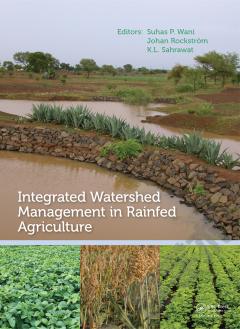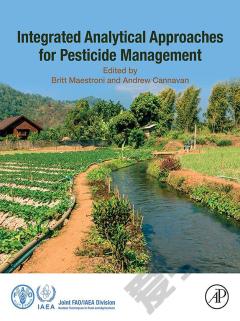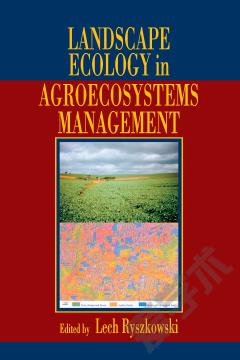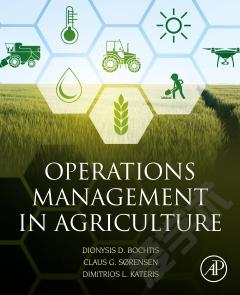Agricultural Acarology —— Introduction to Integrated Mite Management
----- 农业蜱螨学:综合螨处理简介
Introduction to Acarology General Introduction to Acarology Selected References Selected Websites Relevant to Acarology The Relationship of Mites to Other Arthropods Characteristics of the Arthropoda Higher Classification of Mites Selected References Basic Structure and Function of Mites Morphology Feeding and Food Types Excretion Water Balance Muscle System Respiration The Nervous and Sensory Systems The Circulatory System Lifecycles Diapause Dispersal Reproduction Genetics and Sex Determination Selected References Collection, Identification and Culturing of Mites Collection Goals Collecting Plant-Feeding or Predatory Mites Monitoring Vertebrates for Parasitic Mites and Ticks Identification of Mites Culturing Mites Additional Acarological Information Selected References Integrated Mite Management Strategy and Tactics The Strategy of Integrated Mite Management Historical Overview Classical, Augmentative, and Conservation Biological Control Quarantines Cultural Controls Genetic Control Chemical Control Pesticide Resistance Host-Plant Resistance Sampling and Monitoring Methods Crop Pest Control Consultants and Integrated Pest Management Selected References Pest Mites and Their Natural Enemies on Plants Tetranychidae: Premier Plant Pests Systematics. Biology Role of Silk Dispersal Population Dynamics Tetranychid Anatomy Selected Species of Plant Pests by Genus Tetranychidae and Plant Diseases Tetranychidae as Weed Control Agents Host-Plant Resistance to Tetranychidae Resistance to Host-Plant Resistance Pesticide Resistance in Tetranychids Selected References The Tarsonemidae Biology of the Plant-Feeding Tarsonemidae Steneotarsonemus (or Phytonemus) pallidus Polyphagotarsonemus (or Hemitarsonemus) latus Control Other Pest Species of Tarsonemids Selected References The Eriophyoidea: The Good, the Bad, and the Unknown Basic Biology Vectors of Disease: Definitely Undesirable Selected Eriophyoid Pests Collecting and Sampling Eriophyoids Eriophyoids as Alternative Prey: Potentially Good. Invasive Eriophyoid Species: Clearly Bad Biological Control of Weeds by Eriophyoid Mites: Potentially Good Identification of Eriophyoids Control of Eriophyoids Selected References The Tenuipalpidae (Flat or False Spider Mites) as Pests Biology Some Tenuipalpid Pests Around the World. Transmission of Plant Diseases Control of Tenuipalpids Selected References The Penthaleidae Systematics and Distribution Red-Legged Earth Mite (RLEM) Blue Oat Mite (Penthaleus species) Selected References Friends or Foes? The Anystidae: Friends of Limited Value. The Hypoaspidae: Friends, Especially for Augmentative Releases. The Tuckerellidae: Potential Pests Rarely Found Except in Tropical and Subtropical Climates The Tydeidae: Mostly Friends as Predators, Alternative Prey, and Sanitizing Agents The Acaridae: Usually Foes but Occasionally Beneficial? The Hemisarcoptidae: Friends Requiring More Study The Stigmaeidae: Friends, Especially in Unsprayed Orchards and Vineyards. The Oribatida (Cryptostigmata): Usually Beneficial in the Soil but May Cause Crop Root Damage and Contaminate Foods Selected References The Phytoseiidae: Effective Natural Enemies General Biology Phytoseiid Systematics Phytoseiids in Augmentative Biological Control Programs Life-Table Analyses of Phytoseiids Prey-Location Behavior Dispersal Plant-Emitted Volatiles and Biological Control. Pesticide Resistances in Phytoseiids Genetic Improvement of Phytoseiids Rearing Methods for Spider Mites and Phytoseiids Selected References Predatory Insects and Plant-Feeding Mites Insects as Predators of Plant-Feeding Mites: Pros and Cons Family Coccinellidae (Order Coleoptera): Stethorus Are Mite Specialists Family Staphylinidae (Order Coleoptera): Oligota Species May Be Useful Predators of Spider Mites Order Thysanoptera (Phlaeothripidae, Asolothripidae, Thripidae): Thrips May Be Generalists or Specialists (Six-Spotted Thrips) Heteroptera (Hemiptera: True Bugs): Generalist Predators of Small Arthropods, Including Mites. Cecidomyiidae (Order Diptera): Feltiella Species Can Be Effective Predators of Spider Mites Order Neuroptera (Chrysopidae, Coniopterigidae, Hemerobiidae): Generalist Predators That May Sometimes Feed on Mites Ants as Predators of T. urticae Spiders as Predators of Mites and Ticks: Less Well Studied Selected References Pathogens and Symbionts of Mites and Ticks Microbial Symbionts and Pathogens Viruses of Mites and Ticks Fungal Pathogens Microsporidial Pathogens. Commercialization of Microbial Pesticides. Selected References Exemplars of Integrated Mite Management Programs for Plant-Feeding Mites Classical Biological Control of the Cassava Green Mite in Africa Steps in a Classical Biological Control Program Cassava Green Mite (Mononychellus tanajoa) in Africa. Control Measures Attempted Risk Evaluation for Classical Biological Control Taxonomic Problems Why Not Use African Phytoseiids as Natural Enemies? Program Costs and Benefits Selected References Integrated Mite Management in Washington Apple Orchards The Apple Ecosystem. Mites on Apples IMM from the 1960s to the Early 1990s Problems with IMM in the 1990s Current and Future Changes to IMM in Washington Apple Orchards. Selected References Integrated Mite Management in California Almonds Almonds in California Pest Mites in California Almond Orchards. Research on Control Tactics Combined Tactics of the IMM Program Updated Almond Pest Management Program Selected References Integrated Mite Management in Citrus in Florida and California Citrus Production in Florida and California Diversity in California Climates and Mite Species. Managing Mites in Florida Citrus Groves Research Needs Selected References Managing Mites on Ornamental Plants Types of Ornamental Plants. Tactics for Managing Pests of Ornamentals Mites on Ornamental Plants Predatory Mite Release Methods in Greenhouses The Future of Pest Management in Greenhouse Ornamentals Selected References Soil Mites and Agriculture Pest Mites of Honey Bees Varroa jacobsoni Biology and Taxonomy Monitoring for Varroa Control of Varroa Integrated Varroa Management. Selected References Tracheal Mite (Acarapis woodi) Biology Integrated Control of Acarapis woodi Selected References Parasitic Mites of Mammals and Birds Ticks (Argasidae and Ixodidae) Ticks as Pests Biology of the Ixodidae Genera of the Ixodidae Biology of the Argasidae Pest Management of Ticks Selected References Pest Mites of Farm and Companion Animals Poultry Red Mite or Roost Mite, Dermanyssus gallinae (Dermanyssidae) European or Northern Fowl Mite, Ornithonyssus sylviarum (Macronyssidae). Tropical Fowl Mite, Ornithonyssus bursa (Macronyssidae) Chiggers (Actinedida: Trombiculidae) Follicle Mites, Demodex (Actinedida: Demodicidae). Straw- or Hay-Itch Mites, Pyemotes (Actinedida: Pyemotidae) Fur Mites, Cheyletiella (Actinedida: Cheyletiellidae) Acaridid Mites as Parasites or Scavengers Endoparasites of Livestock Selected References Pest Mites of Stored Products and Households Post-Harvest Pest Mites Acarine Pests of Stored Foods Control of Mites in Stored Grains and Other Foods Stored Bulb Mites and Their Control Selected References Dust Mites (Pyroglyphidae) The Importance of Dust Mites Species of Dust Mites. Biology of Dust Mites Integrated Management of Dust Mites and Their Allergens Selected References Some General Conclusions About Integrated Mite Management Glossary Index
{{comment.content}}








 京公网安备 11010802027623号
京公网安备 11010802027623号